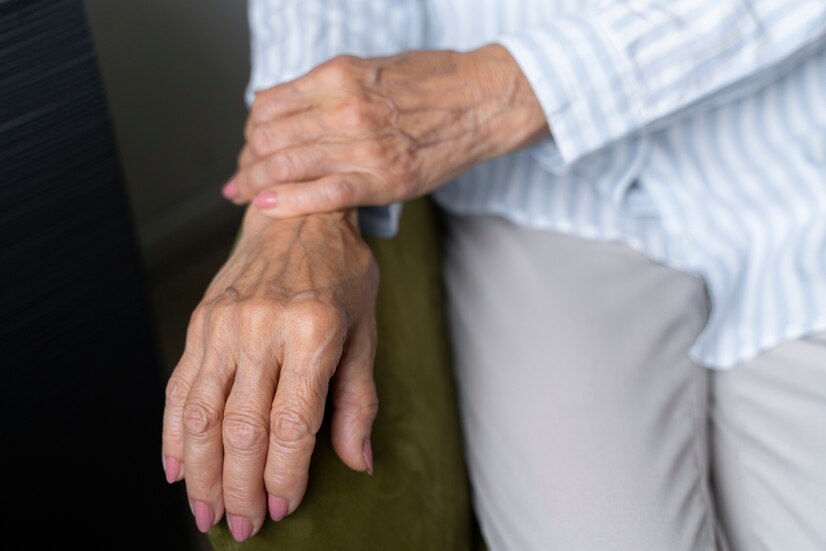Rheumatoid Arthritis

What is Rheumatoid Arthritis?
Rheumatoid Arthritis (RA) is a chronic inflammatory disorder that primarily affects the joints. Unlike osteoarthritis, which is caused by wear and tear, RA is an autoimmune condition where the body’s immune system mistakenly attacks its own tissues, particularly the synovium (the lining of the membranes that surround the joints).
Causes of Rheumatoid Arthritis
- Genetics: A family history of RA increases the risk of developing the condition.
- Autoimmune Response: The exact trigger is unknown, but the immune system attacks the synovium, leading to inflammation.
- Environmental Factors: Certain infections or environmental exposures might trigger RA in people genetically predisposed to the disease.
- Hormonal Factors: Hormones may contribute to the onset and severity of RA, which is more common in women.
Symptoms of Rheumatoid Arthritis
- Joint Pain and Stiffness: Particularly in the morning or after periods of inactivity.
- Swelling: Joints may become swollen, tender, and warm to the touch.
- Fatigue: Persistent tiredness and loss of energy.
- Fever: Low-grade fever is common.
- Rheumatoid Nodules: Firm lumps of tissue under the skin, usually over bony areas.
- Reduced Range of Motion: Difficulty moving the affected joints.
- Symmetrical Pattern: RA typically affects joints on both sides of the body, such as both hands or both knees.
Diagnosis of Rheumatoid Arthritis
- Physical Examination: Checking for swelling, redness, and warmth in joints.
- Blood Tests:
- Rheumatoid Factor (RF): An antibody found in about 80% of people with RA.
- Anti-CCP (Cyclic Citrullinated Peptide): More specific antibody for RA.
- ESR (Erythrocyte Sedimentation Rate) and CRP (C-Reactive Protein): Indicators of inflammation.
- Imaging Tests: X-rays, MRI, and ultrasound to assess joint damage and inflammation.
Treatment and Management
Medications:
- NSAIDs (Nonsteroidal Anti-Inflammatory Drugs): Reduce pain and inflammation.
- Corticosteroids: Reduce inflammation and suppress the immune system.
- DMARDs (Disease-Modifying Antirheumatic Drugs): Slow the progression of RA and save joints and other tissues from permanent damage (e.g., methotrexate, sulfasalazine).
- Biologic Agents: Target specific parts of the immune system to control inflammation (e.g., TNF inhibitors, interleukin-6 inhibitors).
Physical Therapy:
- Exercises: Strengthening and stretching exercises to maintain joint flexibility and muscle strength.
- Occupational Therapy: Learning to protect joints and perform daily tasks efficiently.
Lifestyle Changes:
- Healthy Diet: Anti-inflammatory diet rich in fruits, vegetables, whole grains, and omega-3 fatty acids.
- Regular Exercise: Low-impact activities like swimming, cycling, and walking.
- Stress Management: Techniques such as yoga, meditation, and deep-breathing exercises.
Surgical Treatments:
- Synovectomy: Removal of the inflamed synovium.
- Tendon Repair: Repair of tendons around the joints.
- Joint Replacement: Replacing severely damaged joints with prosthetics.
- Joint Fusion: Fusing bones to stabilize or realign a joint.
Living with Rheumatoid Arthritis
Managing RA involves a comprehensive approach that includes medication, lifestyle modifications, and regular medical care. Patients should work closely with their healthcare providers to develop a personalized treatment plan aimed at reducing symptoms, maintaining joint function, and improving overall quality of life.
Preventive Measures
- Early Diagnosis and Treatment: Early intervention can help manage symptoms and prevent joint damage.
- Regular Check-Ups: Ongoing monitoring to adjust treatment plans as necessary.
- Healthy Lifestyle: Maintaining a healthy weight, eating a balanced diet, and staying active.
- Joint Protection: Using assistive devices, ergonomic tools, and techniques to reduce joint stress.
- Education and Support: Learning about RA and joining support groups for emotional and practical support.

